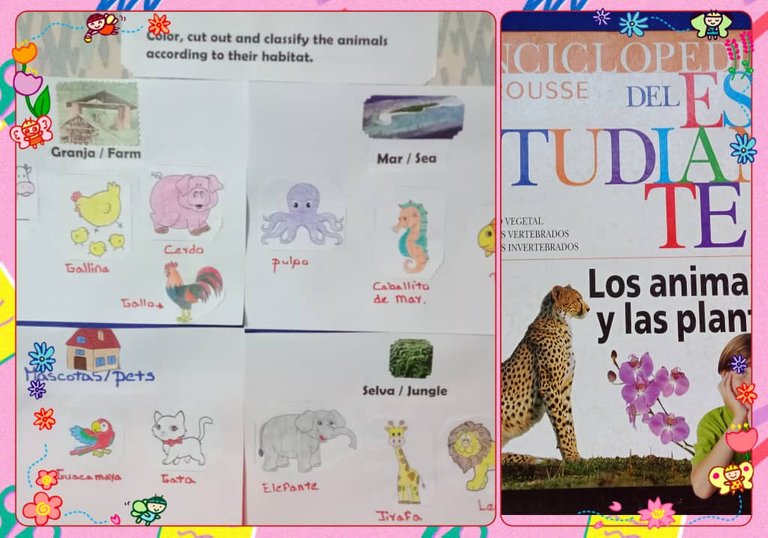
Hello, hello parents of this beautiful community, who every day give their best to make homeschooling a great experience, using innovative strategies and techniques for children's learning; today I share with you an activity that I did with my son, which is to classify the animals according to their habitat or place where they live, this is to work holistically motor concentration and attention, we started reading a book on the classification of animals and being a very broad ecosystem we selected 4 topics: Jungle, Sea, Farm and Pets, we study the characteristics of them: size, color of fur or feathers, food, among others. Also the aspects that define mammals, vertebrates and invertebrates, carnivores and very important the care that must be taken with pets.
The objective of this activity is that the child knows and identifies the animals by means of a simple classification that allows him to establish his criteria at the moment of describing them and explain to which group or family they belong.
Hola, hola padres y madres de esta hermosa comunidad, que cada día dan lo mejor de sí para hacer de el educación en casa una gran experiencia, usando estrategias y técnicas innovadoras para el aprendizaje de los niños; hoy comparto con ustedes una actividad que realicé con mi hijo , la cual consiste en clasificar los animales de acuerdo a su hábitat o lugar donde viven, esta consiste en trabajar de forma holística la motricidad, concentración y atención, iniciamos leyendo un libro sobre la clasificación de los animales y por ser un ecosistema muy amplio seleccionamos 4 temas : Selva, Mar, Granja y Mascotas, estudiamos las características de ellos: tamaño, color del pelaje o plumas, alimentación, entre otras. También los aspectos que definen a los mamíferos, vertebrados e invertebrados, carnívoros y muy importante el cuidado que debe tener con las mascotas
El objetivo de esta actividad es que el niño conozca e identifique los animales mediante una sencilla clasificación que le permita establecer sus criterios al momento de describirlos y explicar a que grupo o familia pertenecen.




What do we need?
Book
Rule
Creyones
Pencil
Glue
Printed images of animals
Scissors
Recycling sheets
¿Qué necesitamos?
Libro
Regla
Creyones
Lápiz
Pegamento
Imágenes de animales impresas
Tijera
Hojas de reciclaje


How do we do it?
This activity can be carried out in two phases: First the theoretical part reading and studying the general characteristics of the animals, then the practical part where the child will apply what was previously studied; the images are printed with the selected animals, then the child colors them, in this works motor skills, creativity and concentration, already colored the images under the supervision of an adult cut out the images and then we move on to the development.
¿Cómo lo hacemos?
Esta actividad se puede realizar en dos fases: Primero la parte teórica leyendo y estudiando las características generales de los animales, luego la parte práctica donde el niño aplicará lo estudiado anteriormente; se imprimen las imágenes con los animales seleccionados, luego el niño las colorea, en este paso trabaja la motricidad, creatividad y concentración; ya coloreadas las imágenes y bajo la supervisión de un adulto recorta las imágenes y luego pasamos al desarrollo.



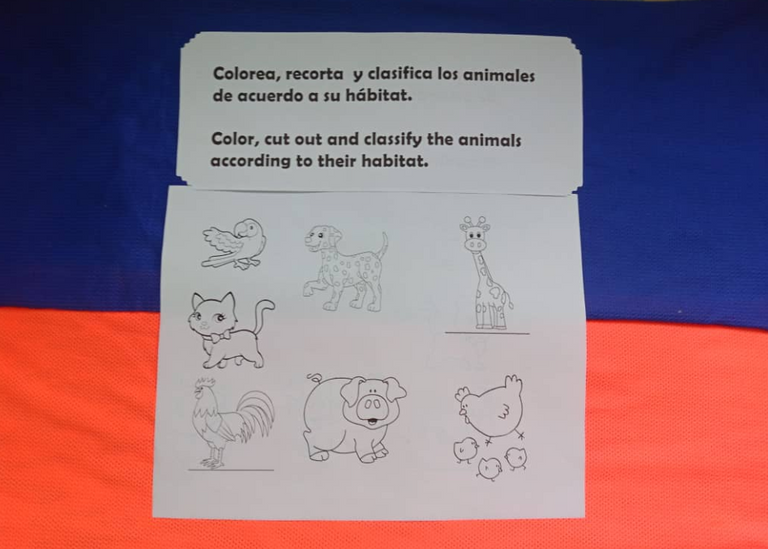

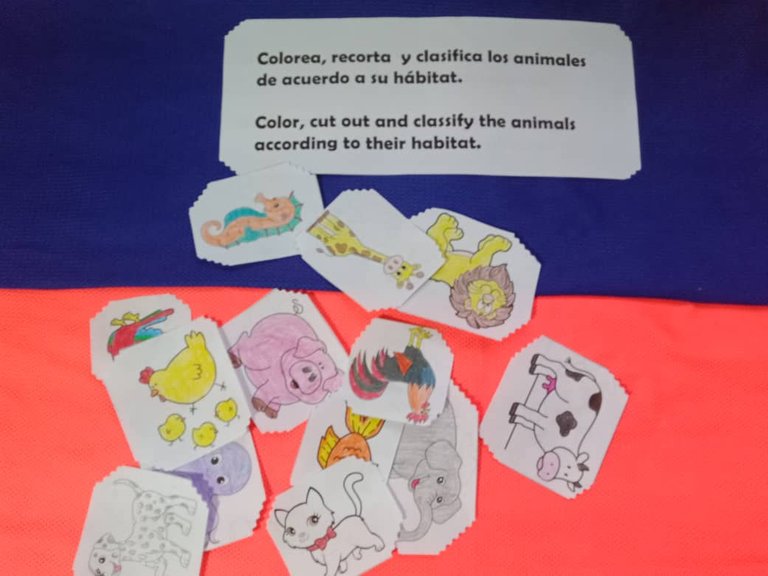

Development of the activity
To perform the practical part we cut and paste the selected topics (jungle, farm, pets and sea) on sheets of recycled paper and paste an image relating to these items, read the instructions and the child will paste the corresponding images on each sheet, among the farm animals we have cow, hen, pig and rooster, these are usually raised near the house in a space established for them, the family is part of the care and feeding of these animals, they in turn provide milk, eggs, meat for food and livelihood of the family.
Then the animals are pasted on the remaining sheets, we move forward with the animals of the jungle, the characteristics that stand out most of the elephant and giraffe is that they are very large and herbivorous, for its part the lion is of an average size and is carnivorous, these live in large areas of land and basically are located on the African continent.
Desarrollo de la actividad
Para realizar la parte práctica cortamos y pegamos los temas seleccionados (Selva, granja, mascotas y mar) en hojas en hojas recicladas y pegamos una imagen referente a estos items, se leen la instrucciones y el niño pegará las imágenes correspondientes en cada hoja, entre los animales de la granja tenemos vaca, gallina, cerdo y gallo, estos por lo general se crían cerca de la casa en un espacio establecido para ellos, la familia forma parte del cuidado y alimentación de estos animales, ellos a su vez proveen leche , huevo, carne para la alimentación y sustento de la familia.
Seguidamente se pegan los animales en las hojas restantes, avanzamos con los animales de la selva, las características que más resaltan de el elefante y la jirafa es que son muy grandes y herbívoros, por su parte el león es de un tamaño promedio y es carnívoro, estos viven en grandes extensiones de terreno y básicamente se ubican en el continente Africano.

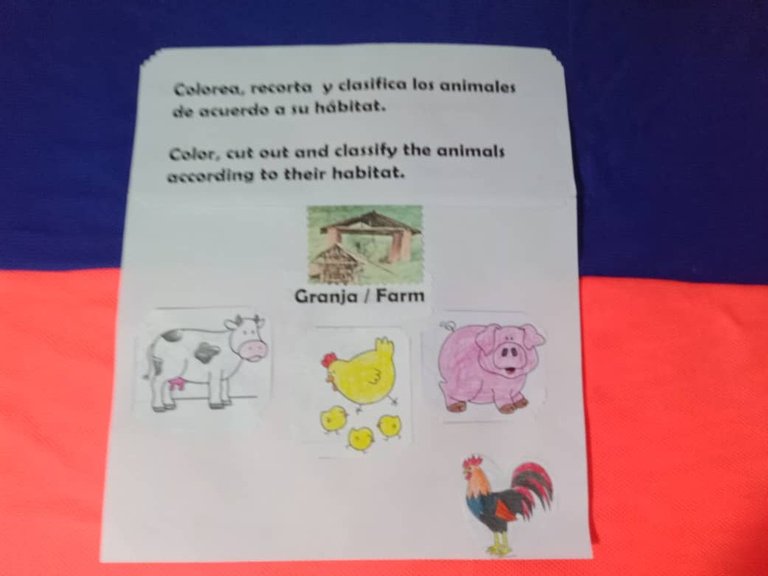


We move on to the marine fauna, which is very diverse and in the coastal areas of the planet is common to sell and buy products derived from the sea fresh fish, shrimp, hake fillets, also companies that process and package these foods, finally the images of pets are pasted, those animals that we have at home and receive the attention and affection of family members; most of the children are very attached to the pets and they give affection and care to these "little animals" at home we have morrocoyas and my son is very attentive to their care; to conclude the activity the child writes the name of the animals so he can identify them by name and image, this activity was very productive and interesting, we learned a little of the wide animal kingdom and not always the size determines the supremacy of an animal, a fact that we found interesting is that the Leopard is the animal that runs faster but because of all the energy it uses to run gets tired very quickly, if in the path that ran failed to reach the prey, you must rest and start the hunt again; A surprising animal is the Honey Badger, it basically feeds on honey and has the ability to detect the honeycombs from several kilometers away and the stings of the wasps do not cause any damage, so far our activity classifying the animals.
Avanzamos a la fauna marina , la cual es muy diversa y en las zonas costeras del planeta es común la venta y compra de productos derivados del mar pescados frescos, camarones, merluzas en filete, también empresas que procesan y empaquetan estos alimentos, por último se pegan las imágenes de las mascotas, esos animales que tenemos en casa y reciben la atención y cariño de los miembros de la familia; los niños en su mayoría soy muy apegados a las mascotas y les dan afecto y cuidados a estos "animalitos" en casa tenemos morrocoyas y mi hijo está pendiente de su cuidado; para concluir la actividad el niño escribe el nombre de los animales así los podrá identificar por su nombre e imagen, esta actividad fue muy productiva e interesante, aprendimos un poco del amplio reino animal y no siempre el tamaño determina la supremacía de un animal, un dato que nos pareció interesante es que el Leopardo es el animal que corre más rápido pero debido a toda la energía que emplea al correr se cansa muy rápido, si en el trayecto que corrió no logró alcanzar la presa, debe descansar e iniciar nuevamente la cacería; un animal sorprendente es el Tejón Melero, se alimenta básicamente con miel y tiene la capacidad de detectar los panales de miel a varios kilómetros de distancia y las picadas de las avispas no le causan ningún daño, hasta aquí nuestra actividad clasificando los animales.
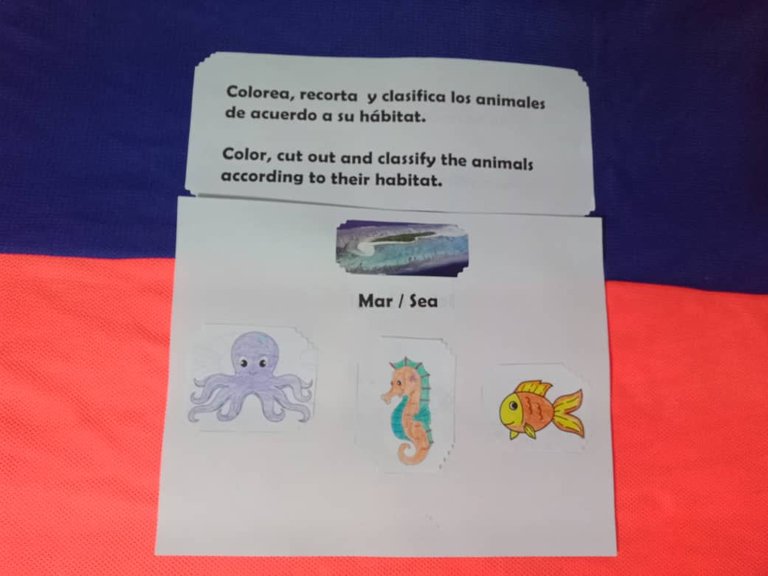
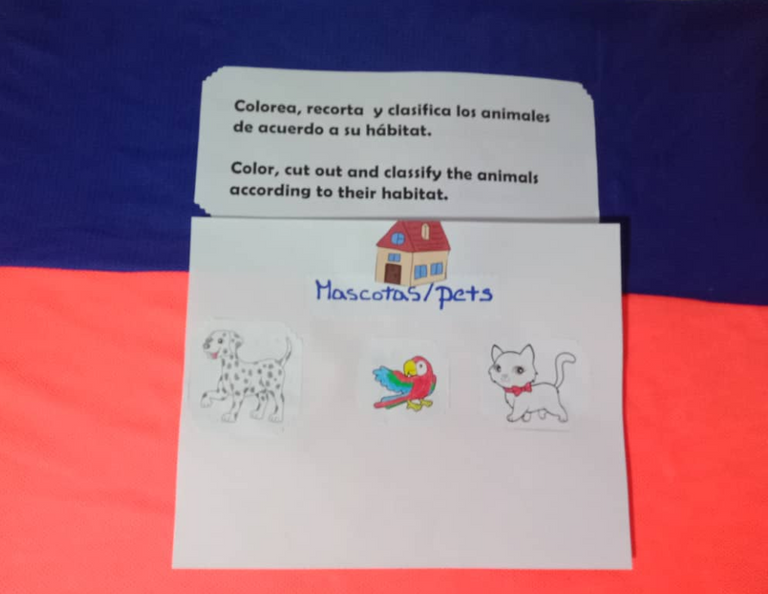

Benefits:
Recognizes and identifies the animals
Learns the importance of caring for pets
Exercises motor skills and creativity
Lists the characteristics of animals
Stimulates concentration and attention
Develops motor and motor skills
Exercises reading and writing
Knows the fauna of certain ecosystems
Learns the importance of working as a family and taking care of the farm.
Acquires responsibilities when taking care of pets.
Beneficios:
Reconoce e identifica los animales
Aprende la importancia del cuidado de las mascotas
Ejercita la motricidad y creatividad
Enumera las características de los animales
Estimula la concentración y atención
Desarrolla habilidades Óculo motoras
Ejercita la lectoescritura
Conoce la fauna de determinados ecosistemas
Aprende la importancia de trabajar en familia y cuidar la granja
Adquiere responsabilidades al cuidar las mascotas.





¡Bendiciones!
Blessings!
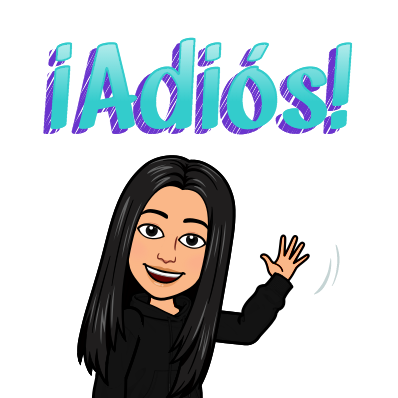
Translated with https://www.deepl.com/translator
All images are my own, captured by a Síragon LC-3000 camera, divisores cortesía de @kattycrochet.
Todas las imágenes son de mi autoría, capturadas por una cámara Síragon LC-3000, dividers courtesy of @kattycrochet.
¡Felicitaciones!
1. Invierte en el PROYECTO ENTROPÍA y recibe ganancias semanalmente. Entra aquí para más información.
3. Suscríbete a nuestra COMUNIDAD, apoya al trail de @Entropia y así podrás ganar recompensas de curación de forma automática. Entra aquí para más información sobre nuestro trail.
4. Creación de cuentas nuevas de Hive aquí.
5. Visita nuestro canal de Youtube.
Atentamente
El equipo de curación del PROYECTO ENTROPÍA
Saludos @entropia, muchas gracias por el apoyo.
Feliz y bendecido día!
oh animals is always our most favourite topic for investigation;)
It is a subject that children are attracted to and ask a lot of questions, it is one of my son's favorite subjects, especially dinosaurs.
Greetings!
Sin duda alguna aprenden a identificar los animales y el hábitat. Bonita estrategia amiga.
Saludos y bendiciones
Hola amiga, la lectura es muy importante en el aprendizaje de los niños y si incluyen imágenes mucho mejor ,porque les permite tener una visión más amplia y mejor comprensión de lo que están leyendo, además les ayuda a conocer nuevas palabras, clasificar los animales fue muy divertido y aprendimos varios datos curiosos de ellos.
Bendiciones!
The rewards earned on this comment will go directly to the people( @virgilio07 ) sharing the post on Twitter as long as they are registered with @poshtoken. Sign up at https://hiveposh.com.
Yay! 🤗
Your content has been boosted with Ecency Points, by @belkyscabrera.
Use Ecency daily to boost your growth on platform!
Support Ecency
Vote for new Proposal
Delegate HP and earn more
Thank you very much @ecency.
Congratulations your publication has been chosen among the best of the day.
KEEP CREATING GOOD CONTENT.
Greetings @edu-venezuela team, thank you very much for your support.
Success and blessings in the work you do!
Una buena forma de estudiar los animales y sus hábitats, te felicito por esa idea. Me gusta buscar siempre estrategias distintas para aprender sobre diferentes tópicos. La idea es desarrollar las capacidades cognitivas de los infantes. Fue un gusto pasar por tu blog. Saludos.